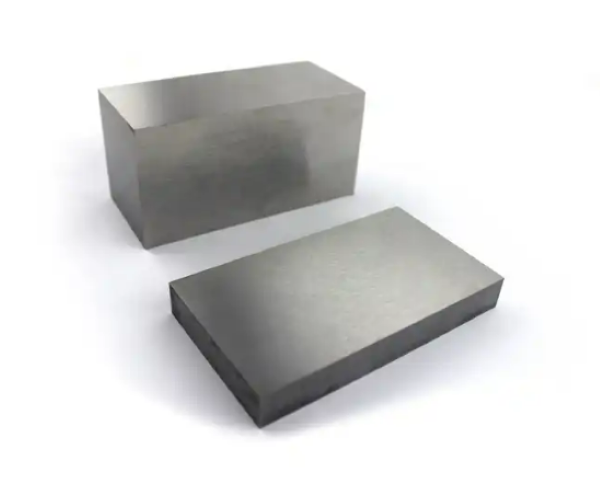Tungsten Alloying: Enhancing Steel's Performance

Introduction
Tungsten is an exceptional and indispensable metal. It plays a pivotal role in shaping the landscape of steel production and its various applications. Within the realm of steel, tungsten's unique properties and diverse applications serve as a cornerstone in enhancing the strength, durability, and performance of steel alloys. This article is going to explain the features and impacts of tungsten on steel performance.

Tungsten Alloy
Tungsten: The Steel Industry's Powerhouse
Tungsten is known for its remarkable density, strength, and high melting point. Renowned for its remarkable density, tungsten ranks among the heaviest elements, nearly 19 times denser than water. It also has inherent strength and a melting point surpassing 3,400 degrees Celsius. Thus, tungsten is resistant to deformation even under extreme temperatures and intense mechanical stress. This unique combination of density, strength, and thermal endurance establishes tungsten as a cornerstone in diverse applications, from aerospace technologies to industrial manufacturing and beyond. And, it is a fundamental element in steel production. Its incorporation into steel alloys imparts a myriad of advantageous properties that elevate the performance of steel across multiple sectors.
Tungsten Alloying: Enhancing Steel's Performance
Tungsten, though not a primary component of steel, plays a crucial role in enhancing steel's properties. That’s especially useful for applications where high strength, durability, and resistance to extreme conditions are essential. Here are several key uses of tungsten in the field of steel:
--Alloying Agent:
Tool Steels: Tungsten is a primary alloying element in tool steels. In this way, W imparts exceptional hardness, wear resistance, and high-temperature strength. Tungsten-based tool steels are vital for manufacturing cutting tools, drills, milling cutters, and other tools used in metalworking, mining, and construction.
--High-Speed Steel (HSS):
High-Speed Steel Production: Tungsten is a key component in high-speed steel formulations. Its addition enhances the hardness and red-hardness (the ability to retain hardness at elevated temperatures) of these steels. Therefore, these cutting tools can operate at high speeds and withstand intense heat without losing their cutting edge. Related reading: High-Speed Steel vs Tungsten Steel
--Wear and Corrosion Resistance:
Steel for Harsh Environments: Tungsten-alloyed steels are used in components for oil and gas exploration, mining equipment, and applications exposed to harsh abrasion or corrosive environments. These alloys offer superior wear and corrosion resistance and prolong the lifespan of components in challenging conditions.
--Radiation Shielding:
Medical and Nuclear Applications: Tungsten alloys are often combined with steel, and they are employed in radiation shielding in medical and nuclear industries. Their high density makes them effective in attenuating X-rays, gamma rays, and other forms of radiation, protecting personnel and equipment.
--Structural Steel:
Strength and Stability: While not a direct additive in structural steel, tungsten contributes to improving the performance of steel in construction. Its use in specialized alloys can enhance the strength and stability of structural components, especially in situations where extreme loads or conditions are anticipated.
Other Types of Tungsten Alloys
Tungsten alloying also involves combining tungsten with other elements to create various types of tungsten alloys. Each of them tailors for specific applications. Here are some common types:
--High-Density Tungsten Alloys:
Comprising tungsten combined with elements like nickel, copper, or iron, high-density tungsten alloys possess exceptional density, typically ranging from 15.8 to 18.5 g/cm³. These alloys find extensive use in aerospace, radiation shielding, and high-performance applications where their high density and superior radiation absorption properties are crucial.
--Tungsten-Copper Alloys:
Combining tungsten with copper results in tungsten-copper alloys known for their high thermal and electrical conductivity. These alloys offer a balance between the exceptional hardness of tungsten and the excellent conductivity of copper. So, they have become ideal for electrical contacts, heat sinks, and other applications requiring both conductivity and durability.
--Tungsten-Nickel-Iron Alloys:
Tungsten-nickel-iron alloys, often referred to as "heavy alloys," incorporate these elements to create materials with increased density and improved machinability. These alloys are utilized in kinetic energy penetrators, counterweights, balance weights, and applications requiring high-density materials with machinability properties.
--Cemented Carbides (Tungsten Carbide):
Cemented carbides are composed of tungsten carbide particles bonded with a cobalt matrix through sintering. Known for their exceptional hardness, wear resistance, and strength, these alloys are extensively used in cutting tools, machining inserts, drills, and various wear-resistant components across industries due to their superior performance in high-stress environments.
--Radiation Shielding Alloys:
Tungsten-based alloys, often combined with nickel and iron, are employed in radiation shielding applications due to their ability to absorb and attenuate gamma radiation. These alloys are utilized in medical and industrial radiation shielding, nuclear power plants, and other environments where radiation protection is critical.
--Super Alloys and High-Temperature Materials:
Incorporating tungsten into super alloys enhances their high-temperature performance, corrosion resistance, and strength at elevated temperatures. These alloys are vital in aerospace, gas turbine engines, and other applications requiring materials capable of withstanding extreme temperatures and aggressive environments.
Conclusion
Tungsten's role in steel as an alloying element is predominantly. It enhances steel's properties in specific applications that demand exceptional hardness, wear resistance, high-temperature strength, and radiation shielding. Its use in tool steels, high-speed steels, wear-resistant alloys, and in specialized structural applications demonstrates its importance in advancing steel's capabilities in various industrial sectors. Advanced Refractory Metals (ARM) stands as a premier supplier of top-quality Tungsten Alloy products. Our commitment lies in providing competitive pricing and swift lead times across our entire range. Check our homepage to find the perfect products for your specialized Tungsten material needs.
{{item.content}}
LEVE A REPLY
{{item.children[0].content}}
{{item.content}}






